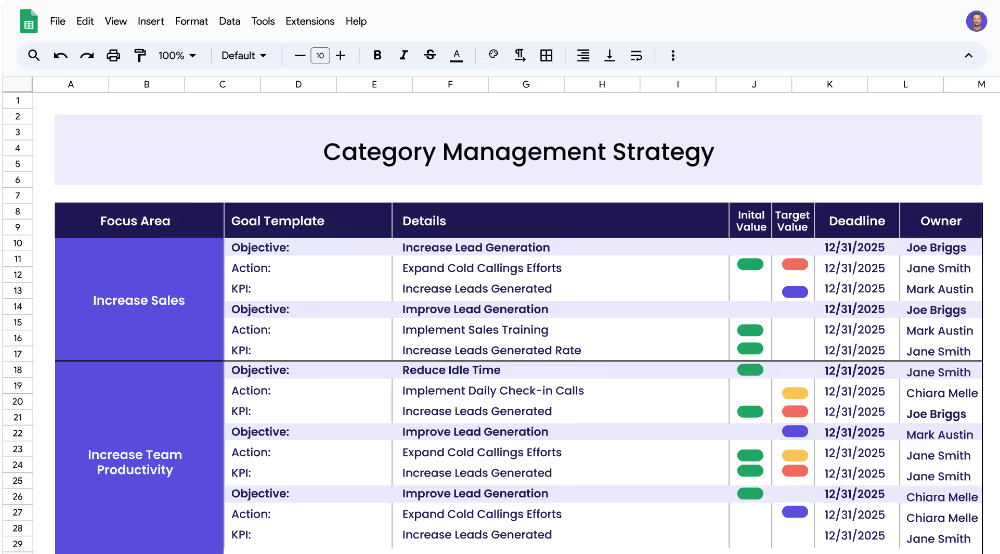Category management is a strategy used by businesses to maximize the performance of a category of products and services. It involves identifying customer needs, analyzing the competitive landscape, and developing a strategy to meet customer needs, drive category growth and increase profitability. The category management strategy template is a comprehensive tool for category managers and teams to develop and implement category-specific strategies.
Each focus area has its own objectives, projects, and KPIs to ensure that the strategy is comprehensive and effective.
The category management strategy template is designed for category managers, marketing teams, and other business professionals looking to maximize category and brand performance. The template provides a comprehensive framework to define focus areas, objectives, and projects, while making sure they are measurable and attainable.
Focus areas are the main areas of focus or goals of the category management strategy. It’s important to define clear examples of focus areas so that the team has a clear understanding of what the overall objective of the strategy is. Examples of focus areas could include increasing consumer engagement, driving sales, or improving customer retention.
Objectives are specific goals that could be achieved within the focus area. For example, if the focus area is increasing consumer engagement, objectives could include increasing social media presence, increasing engagement through social media, or launching loyalty programs.
KPIs (Key Performance Indicators) are targets that can be set to measure progress and success of the objectives. KPIs should be measurable and specific, and should reflect the objectives. For example, a KPI for increasing social media presence could be “Increase Social Media Followers by 20%.”
Projects (or Actions) are the steps taken to achieve the KPIs. Projects should be specific and related to the objective and KPI. For example, if the KPI is “Increase Social Media Followers by 20%,” the project could be to “Increase Social Media Presence By Building a Social Media Calendar.”
If you’re looking for a more dynamic and efficient way to execute your category management strategy, Cascade Strategy Execution Software offers a robust alternative to traditional spreadsheets and manual processes. Cascade enhances strategy planning and execution with real-time updates, centralized collaboration, and automated performance tracking, enabling you to swiftly adapt to market changes and align your team towards common goals. Sign-up for free or book a demo with one of our strategy experts to explore how Cascade can accelerate your category growth and profitability.


